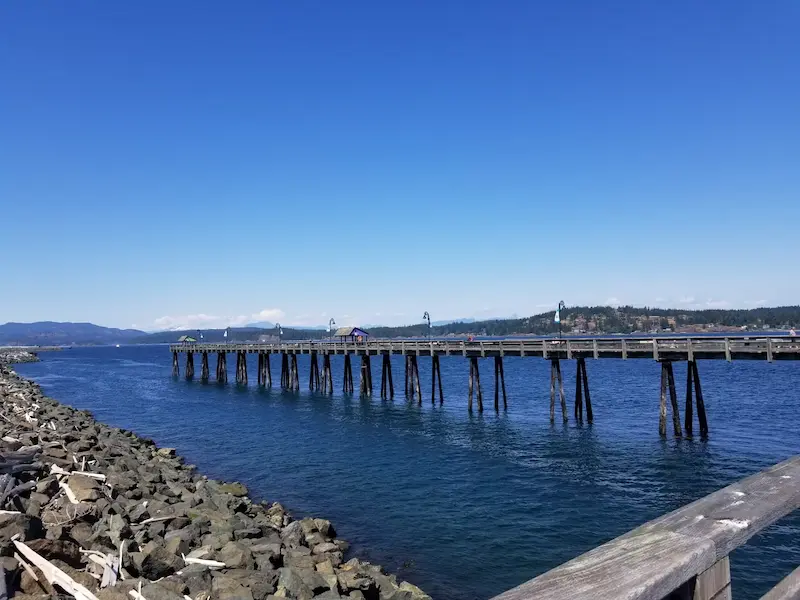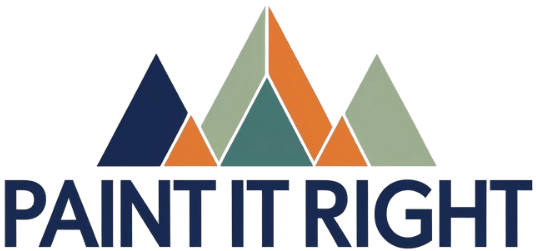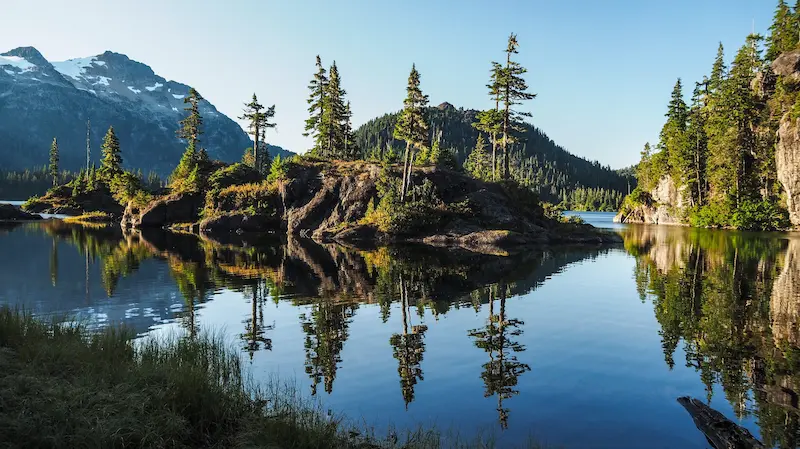When to Paint in Campbell River: Mastering Our Unique Weather Windows
Discover the optimal painting seasons for Campbell River and Vancouver Island. Mike Sinclair shares 15 years of local experience on timing your painting projects perfectly.

Mike Sinclair
Paint it Right Team

Timing is everything when it comes to painting on Vancouver Island. After completing hundreds of projects from Oyster River to Quadra Island, I’ve developed a deep understanding of our local weather patterns and how they affect painting success. Let me share what I’ve learned about finding the perfect painting windows in Campbell River.
Campbell River’s Unique Weather Patterns
Our location at 50°N latitude, combined with the moderating influence of the Pacific Ocean, creates weather conditions unlike anywhere else in Canada. Understanding these patterns is crucial for planning successful painting projects.
Annual Weather Overview
Temperature Ranges:
- Summer (July-August): 15-25°C average
- Spring/Fall: 8-18°C average
- Winter: 2-10°C average
- Rarely below freezing near the coast
Precipitation Patterns:
- Wettest months: November-February (200-300mm/month)
- Driest months: July-August (30-50mm/month)
- Annual average: 1,456mm
- Morning fog common: May-September
The Prime Painting Season: May Through September
May: Spring Awakening
Pros:
- Decreasing rainfall (average 71mm)
- Warming temperatures (12-18°C)
- Longer daylight hours
- Lower humidity than winter
Cons:
- Occasional late spring storms
- Morning dew persists
- Pollen can affect finish quality
Best for: Interior projects transitioning to exterior work
June: Early Summer Excellence
Pros:
- Reliable weather patterns emerging
- Average rainfall drops to 53mm
- Temperatures ideal (14-20°C)
- 16+ hours of daylight
Cons:
- Tourist season beginning (scheduling challenges)
- Occasional “June-uary” cold snaps
- High demand for painters
Best for: Large exterior projects, full home repaints
July & August: Peak Performance
Pros:
- Minimal rainfall (30-40mm monthly)
- Warm, stable temperatures (16-25°C)
- Low humidity
- Extended working hours
Cons:
- Extreme UV exposure
- Surfaces can get too hot (over 30°C)
- Highest demand/prices
- Forest fire smoke occasionally
Best for: All exterior projects, especially waterfront properties
September: Golden Window
Pros:
- Stable weather continues
- Cooler temperatures (12-20°C) ideal for paint application
- Less UV intensity
- Lower demand after Labour Day
Cons:
- Daylight hours decreasing
- Morning dew returns
- Storm season approaching
Best for: Final exterior projects, deck staining
The Shoulder Seasons: Strategic Opportunities
October: Racing the Storms
Early October often provides excellent painting conditions before Pacific storm season arrives. Properties in sheltered areas like Rockland or away from the water can still be painted successfully.
Success factors:
- Monitor long-range forecasts carefully
- Complete moisture-sensitive work first
- Have contingency plans
- Use fast-drying products
March-April: Spring Possibilities
As winter storms subside, painting windows begin opening:
March challenges:
- High moisture content in substrates
- Unpredictable weather
- Cold overnight temperatures
April advantages:
- Rapidly improving conditions
- Eager homeowners ready to refresh
- Less competition for scheduling
Micro-Climate Considerations
Campbell River’s diverse geography creates distinct micro-climates affecting painting schedules:
Oceanfront Areas
Willow Point, Ocean Grove, Saratoga Beach
- Extra wind exposure
- Salt spray concerns
- Morning fog lingers
- Start season 2-3 weeks later
Protected Inland Areas
Rockland, Campbellton, Cedar
- Earlier spring start possible
- Less wind interference
- Better late season options
- More stable conditions
Elevated Areas
Upper Rockland, Hilchey Road area
- Cooler temperatures
- More precipitation
- Wind exposure varies
- Shorter season overall
River Valley Locations
Properties along Campbell River
- Morning fog common
- Higher humidity
- Sheltered from ocean winds
- Unique scheduling needs
Daily Timing Strategies
Summer Schedule (June-August)
6:00 AM - Check dew levels 8:00 AM - Surface preparation begins 10:00 AM - Optimal painting start 2:00 PM - Monitor surface temperatures 6:00 PM - Final coat applications 8:00 PM - Cleanup (still daylight!)
Spring/Fall Schedule
7:00 AM - Weather assessment 9:00 AM - Wait for dew evaporation 10:30 AM - Begin painting 4:00 PM - Stop moisture-sensitive work 5:00 PM - Cleanup
Critical Temperature Rules
- Minimum air temperature: 10°C
- Surface temperature: 10-32°C
- Temperature must remain above 10°C for curing period
- Avoid painting if temperature will drop below 5°C within 48 hours
Weather Monitoring Tools
Essential Resources
-
Environment Canada Marine Forecast
- Specific to Discovery Passage
- Wind and precipitation predictions
- Storm warnings
-
Campbell River Weather Station
- Real-time local conditions
- Historical data for planning
-
Satellite Imagery
- Pacific storm tracking
- Fog pattern recognition
-
Local Knowledge
- Marina weather reports
- Fishermen’s observations
- Indigenous weather wisdom
Project-Specific Timing
Full Exterior Repaint
Optimal window: Mid-June through August Duration needed: 5-10 consecutive dry days Buffer time: Plan for 20% weather delays
Deck and Fence Staining
Best timing: Late May or September Why: Cooler temperatures prevent lap marks Avoid: Hot July/August days
Trim and Detail Work
Flexible timing: May through October Advantage: Can work between weather systems Strategy: Stage materials for quick deployment
Commercial Projects
Considerations:
- Business operation schedules
- Tourist season impacts
- Marine traffic (harbor area)
- Weekend work possibilities
The Rainy Season: Interior Opportunities
While exterior painting becomes challenging October through April, this is prime time for interior projects:
November-February: Indoor Season
Advantages:
- Consistent indoor conditions
- No weather delays
- Lower demand/better pricing
- Comfortable working temperatures
Popular projects:
- Cabinet refinishing
- Interior room painting
- Basement renovations
- Commercial interior updates
Ventilation Strategies
Campbell River homes need proper ventilation during interior painting:
- Use fans despite cool temperatures
- Crack windows when possible
- Monitor indoor humidity levels
- Allow extra drying time
Climate Change Considerations
Recent years have shown shifting patterns:
- Drier summers but with heat domes
- Wetter springs extending into June
- Stronger fall storms arriving earlier
- Increased forest fire smoke events
Adaptation strategies:
- Book earlier in season
- Build in weather contingencies
- Use advanced coating technologies
- Maintain flexibility
Economic Timing Factors
Peak Season (June-August)
- Highest demand
- Premium pricing
- Longer booking lead times
- Competition for quality painters
Shoulder Season (April-May, September-October)
- More competitive pricing
- Faster scheduling
- Weather risk discounts
- Experienced crews available
Off-Season (November-March)
- Interior project focus
- Best pricing available
- Immediate availability
- Time for detailed work
Case Studies: Timing Success Stories
Oceanfront Property - Willow Point
Challenge: Salt exposure, wind, limited weather window Solution: Waited for late June high-pressure system Result: Completed in perfect conditions, lasting 8+ years
Heritage Home - Downtown
Challenge: Multiple coats needed, intricate details Solution: Started in early May, phased approach Result: Finished before summer tourism peak
Commercial Building - Tyee Plaza
Challenge: Minimize business disruption Solution: September scheduling after tourist season Result: Perfect weather, happy tenants
Planning Your Project Timeline
6 Months Before
- Initial consultation
- Color selection
- Budget planning
- Tentative scheduling
3 Months Before
- Firm booking
- Material ordering
- Prep work planning
- Weather contingencies
1 Month Before
- Final preparations
- Weather monitoring
- Neighbor notifications
- Access arrangements
1 Week Before
- Intensive weather tracking
- Final preparations
- Go/no-go decisions
- Alternative dates ready
Professional Weather Assessment
At Paint it Right, we’ve developed a comprehensive weather assessment protocol:
- 72-hour forecast analysis
- Substrate moisture testing
- Micro-climate evaluation
- Risk assessment matrix
- Client communication plan
The Bottom Line: Flexibility is Key
Successfully painting in Campbell River requires:
- Understanding local weather patterns
- Monitoring conditions constantly
- Maintaining schedule flexibility
- Choosing the right products
- Working with experienced professionals
Our maritime climate presents challenges, but with 15 years of local experience, we’ve learned to work with nature rather than against it. The result? Beautiful, long-lasting paint jobs that withstand everything the Pacific throws at them.
Whether you’re planning to refresh your Willow Point cottage, update your Campbellton family home, or revitalize your downtown commercial property, timing your project correctly makes all the difference.
Contact Paint it Right today to discuss your project timeline. We’ll help you navigate Campbell River’s weather patterns to ensure your painting project succeeds, no matter what Mother Nature has in store.

